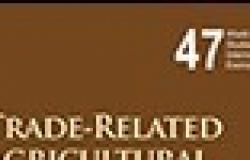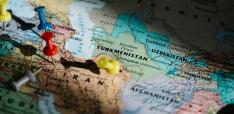Book Review: Trade-Related Agricultural Policy Analysis

Trade-Related Agricultural Policy Analysis edited by David Orden. Singapore: World Scientific 2015. 480 pp, £91 hardcover 978-981-4616-21-8
Agricultural protection, commonly used as an effective domestic support tool by developed countries, has distortionary spill-over effects for developing as well as world markets. It is a critical issue for world agriculture and hence is widely debated in international forums like the World Trade Organization (WTO). This excellent book is an anthology of sixteen research papers that provide a theoretical and empirical evaluation of agricultural policy in the global context. The papers have been authored and co-authored at various times, over a thirty year period (1985-2015), and together they provide a comprehensive and sobering overview of recent issues relating to global agricultural support and policy. It is worthwhile to highlight that the agricultural policy essays in the book are not limited to the developed world alone, but include other articles – involving developing countries – that pertain to the study of the macroeconomic effects of producer support on agriculture prices for India (Chapter 4) and possible effects of trade liberalisation on poverty, inequality and welfare for Pakistan (Chapter 13): thereby extending the analysis to incorporate the development aspect of trade-related agriculture policy.
It is essential to provide a snapshot of the contents of the book for readers to help them to understand the fundamental theme of the volume. The book is divided into four sections: namely macroeconomic impacts on agriculture (Chapters 2 – 5), US Farm Policy in international perspective (Chapters 5 – 10), policy interactions (Chapters 11 – 13) and sanitary and phyto-sanitary measures (Chapters 14 – 17) – each section consisting of papers that are most relevant to that particular theme. The first theme emphasises studying the linkages between macroeconomic variables like exchange rate and monetary policy and agriculture prices. The second section includes papers that provide an overview of US agricultural policy and the WTO negotiations on domestic support over the period 1990 – 2020. The third theme consists of empirical research papers assessing the growth determinants of agriculture in France, and analysing in detail agricultural trade, environmental quality and national welfare issues. The final section of the book focuses on issues relevant to food production, its quality and its safety that affect international trade relations. This section explores the impact of ‘behind-the-border’ measures on cross-border trade in detail. The book includes papers written by distinguished economists like Timothy Josling, David Orden, Richard H. Snape, Donna Roberts, Carl Zulauf and a few others who have made a significant contribution to research in the field of agricultural economics.
One of the book’s notable features is that it includes several papers that have employed econometric models like simulation models, CGE modelling, vector autoregressive (VAR) models, and other empirical models and sensitivity analyses to study the macroeconomic impact of monetary policy and exchange rate on the agricultural sector. However, the frequent usage of mathematical and econometric models might limit the readership of the book. For a layman and even an economics undergraduate, some sections of the book might be difficult to understand. But these papers will be very helpful for more advanced / graduate students and researchers interested in studying the mathematical approach to analysing different agricultural policy scenarios. The editor has very much acknowledged the fact that the conclusions derived from an empirical model or general equilibrium simulations by themselves provide little direction on current policy issues. Therefore, descriptive sections have also been included in the book, which explain the evolution, current state and likely implications of agricultural support on developing nations and the world. To repeat, the book is a good mix of papers providing theoretical and mathematical explanation of several aspects of agricultural trade policy.
The most engrossing part of the book is the section on sanitary and phyto-sanitary measures. The section includes some brilliant research papers that have attempted to provide graphical and theoretical explanation for ‘behind-the-border’ measures. Risk-benefit analysis has been used to quantify gains to consumers from importing products that have some SPS risks associated with them (Chapter 14). Unlike the traditional analysis, this paper tries to highlight the positive side of importing products with some pests and disease risks. It argues for making an amendment in the SPS agreement and encourages WTO members to make quarantine decisions after assessing the benefits accruing to consumers from importing such perilous products, rather than focusing only on producer benefits and their welfare. However, the authors are a bit ambivalent in the concluding remarks, which somewhat puts their arguments on shaky ground.
Chapter 15 focuses on the economic rationale behind the food trade-related regulations and provides a useful classification scheme for food regulations that can aid policymakers and analysts, while discussing trade disputes and negotiating over global regulatory guidelines. The authors make an assertion that ‘trade can contribute to the provision of safe and high-quality food supply’ (p.382) by extending the cost-benefit diagram illustrated in the previous chapter. They also introduce concepts like ‘overprotection’ and ‘underprotection’, arising due to the political economy capture of regulations by either producer or consumer interest groups. Chapter 6 of the book provides a detailed empirical explanation for the political economy capture of regulations, by discussing the attempts made by US agricultural interest groups to influence the outcomes of the North American Free Trade Agreement (NAFTA), but doesn’t say anything about these terms. It would have been interesting if the author substantiated these scenarios with some empirical examples and case studies. Nevertheless, the key factors responsible for sub-optimal regulatory policy (arising due to protection and trade conflicts) are distinctly explained.
Chapter 16 expounds the legal infrastructure for food regulations and standards propounded under the General Agreement on Tariffs and Trade (GATT)/WTO and contrasts it with the new infrastructure adopted after the Uruguay Round negotiations. The clear and precise account of food regulations within the WTO in the past and detailed tables on the status of dispute settlement understanding (DSU) complaints for the period 1992 – 2002 and the decisions taken on them will be helpful for a reader with limited knowledge about the relevant issues. The frequent use of specific examples in this chapter make it easier to understand the topic: like the famous ‘shrimp/turtle’ case against the US brought by India, Malaysia, Pakistan and Thailand (p.426).
Although the book has been arranged in accordance with the above specified themes, as a reviewer I would suggest that the arrangement of chapters could have been modified a little. A change in the sequence of some chapters, such as if Chapter 4 was placed after Chapter 5, would help readers to understand and relate to the problem a lot more. But this does not diminish the excellence of the contents of the book. This lucid and comprehensive book, dealing with the theoretical and empirical analysis of agricultural protection, argued over for many years by developing and developed countries in the Doha Round of the WTO, is a commendable addition to the available literature on the subject.
Preety Bhogal is a Research Associate at the Centre for Policy Research, in New Delhi, India. She can be contacted at preetybhogal{@}cprindia.org.


